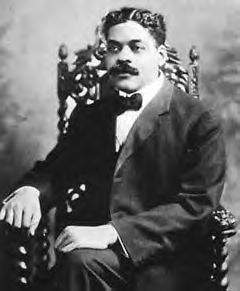Compiled By NAN Staff Writer
News Americas, NEW YORK, NY, Tues. June 21, 2022: The Schomburg Center for Research in Black Culture was named after a Caribbean immigrant whose collections formed the basis of the New York Public Library (NYPL) branch in Harlem.
Arturo Alfonso Schomburg was a historian, writer, collector, and activist who was born in the town of Santurce in the Captaincy General of Puerto Rico, to Mary Joseph, a freeborn black midwife from St. Croix in the Danish West Indies, and Carlos Federico Schomburg, a merchant and son of a German immigrant to Puerto Rico.
While Schomburg was in grade school, one of his teachers claimed that black people had no history, heroes or accomplishments. Inspired to prove the teacher wrong, Schomburg determined that he would find and document the accomplishments of Africans on their own continent and in the diaspora.
He was educated at San Juan’s Instituto Popular, where he learned commercial printing. At St. Thomas College on the island of St. Thomas in the Danish West Indies, he studied Negro literature.
Schomburg immigrated to New York City on April 17 1891, and settled in the Harlem section of Manhattan. His passion for preserving Black culture was preceded by an allegiance to Puerto Rican and Cuban independence groups. He settled into a Puerto Rican enclave of a Cuban area, which was known for its nationalist intellectuals and politically radical cigar workers.
He continued his studies to untangle the African thread of history in the fabric of the Americas. After experiencing racial discrimination in the US, he began calling himself “Afroborinqueño” which means “Afro-Puerto Rican.”
In 1911, Schomburg co-founded with John Edward Bruce the Negro Society for Historical Research, to create an institute to support scholarly efforts. For the first time, it brought together African, West Indian, and Afro-American scholars. In 1914, Schomburg joined the exclusive American Negro Academy, becoming, from 1920 to 1928, the fifth and last President of the organization.
In 1915, Dr. Carter G. Woodson co-founded the Association for the Study of Negro Life and History (now called the Association for the Study of African American Life and History) and began publishing the Journal of Negro History.
Schomburg became involved in the Harlem Renaissance movement, which spread to other African American communities in the U.S. The concentration of blacks in Harlem from across the US and Caribbean led to a flowering of arts, intellectual and political movements. He was the co-editor of the 1912 edition of Daniel Alexander Payne Murray’s Encyclopedia of the Colored Race.
In 1916 Schomburg published what was the first notable bibliography of African American poetry, A Bibliographical Checklist of American Negro Poetry.
In March 1925 Schomburg published his essay “The Negro Digs Up His Past” in an issue of Survey Graphic devoted to the intellectual life of Harlem. It had widespread distribution and influence. In “The Negro Digs Up His Past,” Schomburg was trying to lay the groundwork for an intellectual reputation for racism.
The autodidact historian John Henrik Clarke told of being so inspired by the essay that at the age of 17 he left home in Columbus, Georgia, to seek out Mr. Schomburg to further his studies in African history. Alain Locke included the essay in his edited collection The New Negro.
The New York Public Library and the librarian of the 135th Street Branch, Ernestine Rose, purchased Schomburg’s private collection for $10,000 funded by the Carnegie Corporation in 1926. This purchase would signal the beginning of the transformation of the 135th street’s branch into the Schomburg Center.
His collection included a variety of items, including the acquisition of three missing chapters from “The Autobiography of Malcolm X,” that were cut from his manuscript after his death in 1965. They appointed Schomburg curator of the Schomburg Collection of Negro Literature and Art, named in his honor, at the 135th Street Branch (Harlem) of the Library. It was later renamed the Arthur Schomburg Center for Research in Black Culture.
In 1929 Fisk University President Charles S. Johnson invited Schomburg to curate the Negro Collection at the library of Fisk in Nashville, Tennessee. He assisted in the architectural design contributing to the construction of a reading room and browsing space. By the end of Schomburg’s tenure at Fisk he had expanded the library’s collection from 106 items to 4,600. During 1932 he traveled to Cuba. While there he met various Cuban artists and writers, and acquired more material for his studies.
In 2020, the United States Postal Service featured Schomburg on a postage stamp as part of the series on the Harlem Renaissance.










